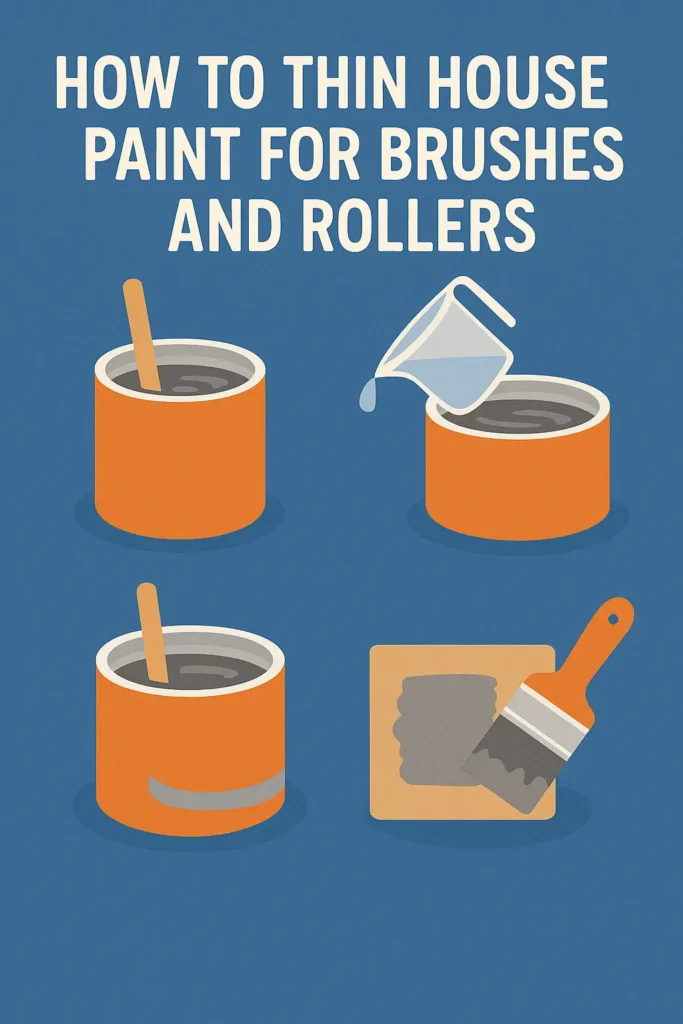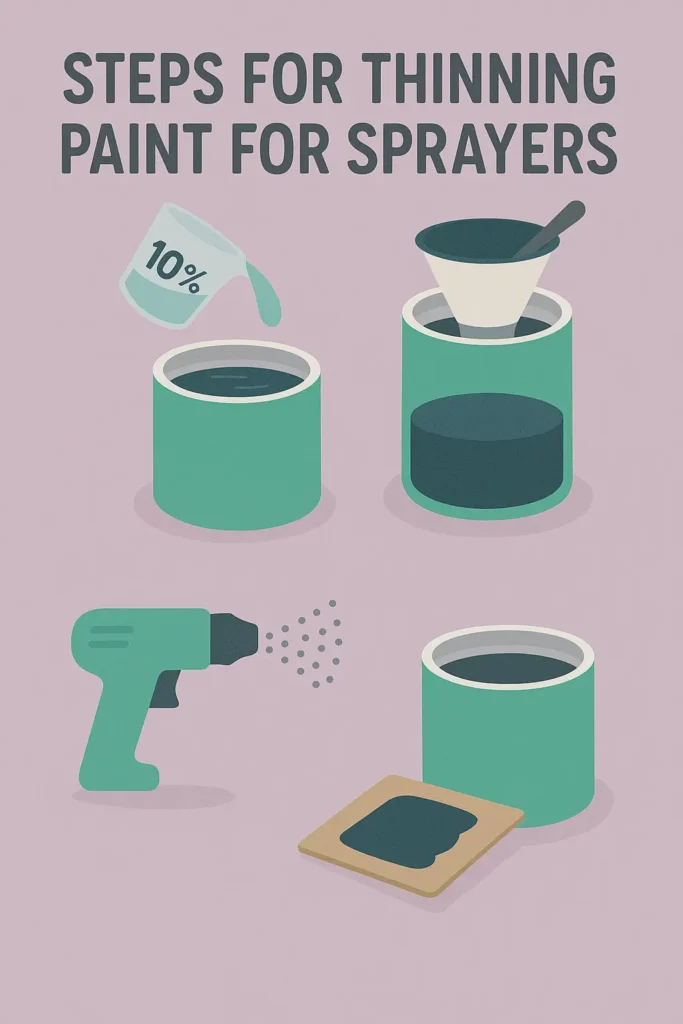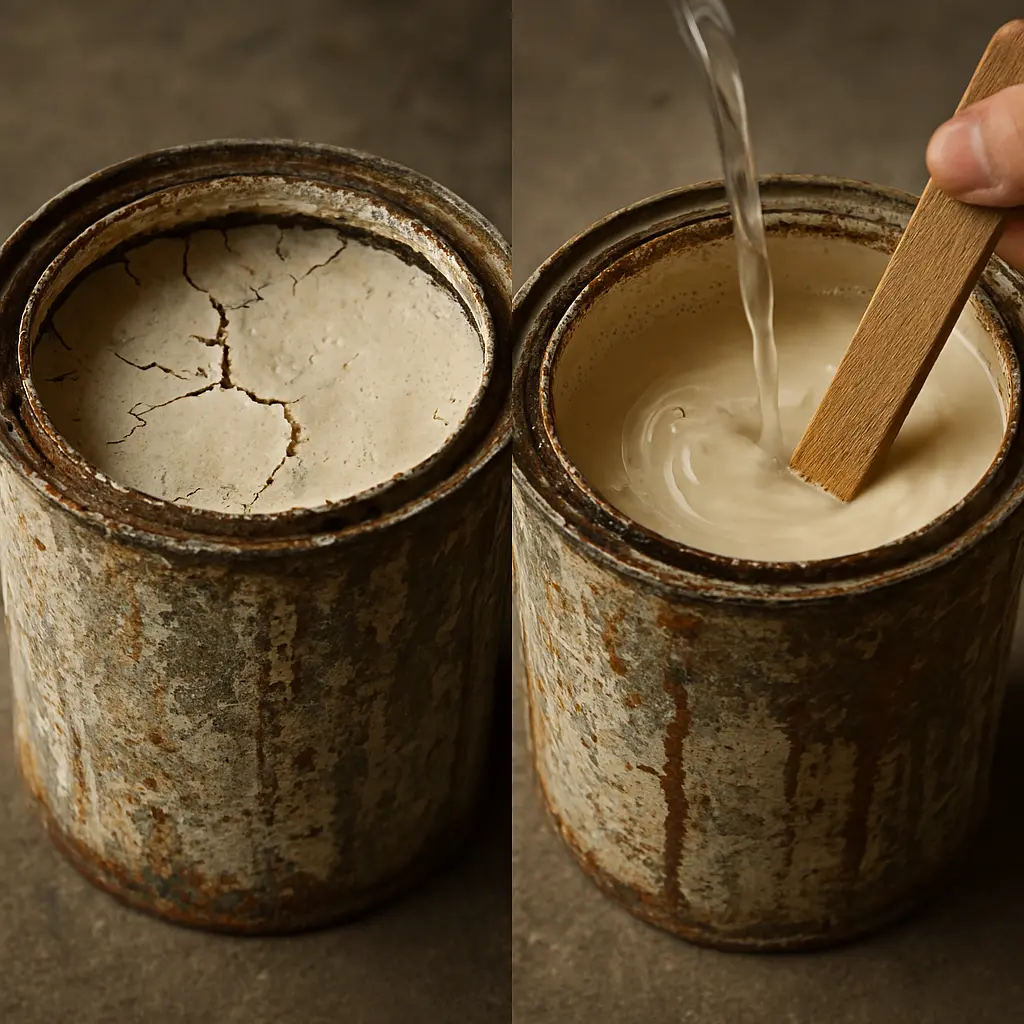Latex paint is one of the most versatile and widely used paints for walls, ceilings, and exteriors. But sometimes, the paint straight from the can can be too thick for smooth application. Knowing how to thin latex paint properly can make all the difference between a streaky mess and a flawless finish.
Whether you’re rolling walls, thinning exterior paint for spraying, or trying to revive a can of thick paint, this guide will walk you through everything step by step.
Why Would You Need to Thin Latex Paint?
Latex paint naturally thickens over time, especially if it’s been exposed to air or stored in less-than-ideal conditions. You might also need thinner paint when:
- Using a paint sprayer for ceilings or walls
- Working in colder temperatures where paint thickens faster
- Wanting smoother coverage on detailed surfaces like cabinets or trim
If you’ve ever wondered how to thin thick paint or how to thin out latex paint, the process is simple but requires precision to avoid making it too watery.
What to Use to Thin Paint
The good news is that latex paint is water-based, so the only thinner you need is clean water. Unlike oil-based paints that require mineral spirits or turpentine, thinning water based paint is easier, safer, and less toxic.
If you’re unsure which paints are best for humid environments like kitchens or bathrooms, check out our guide to the best paint for steamy bathroom ceilings.
How to Thin House Paint for Brushes and Rollers
If you’re painting walls or ceilings with a brush or roller, here’s how to thin house paint correctly:
- Stir the Paint First: Sometimes paint just needs a good mix
- Add Small Amounts of Water: Start with ½ cup of water per gallon of paint
- Stir Thoroughly: Mix until smooth and test the consistency
- Check Coverage: Dip your brush or roller and test on a piece of cardboard or scrap wall

If you’re painting ceilings, make sure your paint pairs well with the right ceiling rollers for an even finish.
Thinning Paint for Sprayer Applications
When it comes to thinning paint for sprayer use, the paint must be thinner than what you’d use for brushing or rolling. Too thick, and it clogs; too thin, and it drips everywhere.

Steps for Thinning Paint for Sprayers
- Add 10% water to a gallon of latex paint
- Stir thoroughly and strain the paint through a paint filter
- Test spray on a piece of cardboard
- Adjust by adding small amounts of water until you get a fine mist
For larger jobs, investing in the best airless paint sprayer will save you time and frustration.
Thinning Exterior Paint for Spraying
Outdoor projects often involve thinning exterior paint for spraying, especially when covering fences, siding, or garage walls. Exterior latex paint is formulated thicker for durability, so thinning is essential for smooth spraying.
- Use no more than 1 quart of water per gallon
- Always mix gradually and test spray before applying to the entire surface
- For fences, consider sealing after painting, here’s a guide on how to stain a fence if you’re prepping wood surfaces
How to Thin Latex Paint Using a Paint Thinning Chart
While experience helps, a paint thinning chart is a practical tool. It provides ratios of paint to water based on application method:
- Brush/Roller: 5–10% water
- Sprayer (Indoor): 10–15% water
- Sprayer (Exterior): Up to 20% water
Always add water gradually, you can thin out more, but you can’t reverse over-thinned paint.
How to Thin Out Thick Paint That’s Been Sitting
If you’ve found an old can in your garage and wonder how to thin out paint, follow these steps:
- Remove any skin or dried clumps
- Stir thoroughly to bring pigments back together
- Add warm water slowly while mixing
- Test the paint on scrap wood or drywall

If the paint is beyond saving, it might be time to buy new. In that case, our guide on the best places to buy paint online will help.
Pro Tips for Success
- Always use a paint strainer before pouring into a sprayer
- Avoid over-thinning, this reduces coverage and durability
- Work in proper ventilation to help paint dry evenly (see how to make paint dry fast)
- Store unused paint tightly sealed to avoid thickening again
Final Thoughts
Learning how to thin latex paint isn’t complicated, but it requires attention to detail. Whether you’re brushing walls, spraying a ceiling, or tackling an outdoor project, proper thinning ensures smoother application and better results.
With the right water-to-paint ratio, a little patience, and some testing, you’ll avoid streaks, clogs, and wasted paint. And if you’re diving into bigger DIY projects, check out our guides on how long it takes to paint a room or the benefits of painting your home to plan your next project with confidence.

Leave a Reply